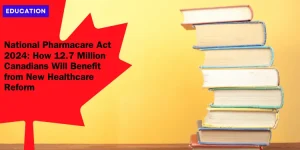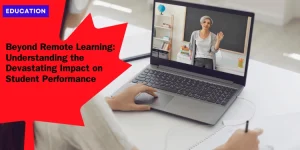2025 Education Priorities: Governors Tackle Student Well-Being and School Choice Amid Achievement Concerns

Anúncios
Overview of Governors’ Education Priorities
Investment in K-12 Funding
As governors delivered their 2025 State of the State addresses, a common theme emerged across party lines:
a commitment to bolstering public education.
Anúncios
An analysis of speeches from 41 governors highlighted a significant focus on increasing K-12 funding.
Many governors view this investment as essential for creating equitable education opportunities and supporting high-need students.
Anúncios
Additionally, efforts to modernize school finance formulas were proposed to ensure funds are allocated more effectively.

Early Childhood Programs and Higher Education
Addressing the long-term educational journey of students, several governors also emphasized the importance of early childhood programs and higher education.
By investing in pre-kindergarten initiatives, governors hope to enhance early learning and prepare students for academic success early in their educational paths.
Higher education also received considerable attention, with governors proposing measures to make college more affordable and to align postsecondary education with workforce needs.
Addressing Student Achievement
A surprising takeaway from the analyses was the minimal focus on declining student achievement, despite its urgency.
Only a few governors directly tackled this issue, with mentions of raising academic standards and improving accountability.
Some governors believe that their broader initiatives in funding, teacher support, and early education may indirectly contribute to reversing the trend of declining student performance.
Financial Commitments and Teacher Support
Governors from both parties showcased a clear dedication to increasing financial support for public education.
This approach includes not just elevated K-12 funding but also targeted grants and financial aid for both students and educational institutions.
Alongside these financial commitments, there was a strong emphasis on strengthening the teaching profession.
Governors proposed various initiatives aimed at improving teacher salaries, creating affordable pathways into teaching, and better supporting educators overall.
Student Well-Being Initiatives
Beyond academics and finance, student well-being has become a focal point this year.
Efforts to enhance youth mental health, enforce technology restrictions, and expand school meal programs were widely discussed.
These initiatives are aimed at creating a holistic educational environment where students not only learn but also thrive mentally and physically.
Governors appear unified in their commitment to enhancing various aspects of the education system, setting a strong foundation for future advancements.
Next, let’s dive deeper into how governors are addressing student well-being in their states.
| Category | Before | After (Impact of Initiatives) |
|---|---|---|
| 🧠 Mental Health | Mental health concerns largely overlooked | Increased focus on mental health with counseling services and technology restrictions |
| 📱 Technology Use | Unrestricted use of phones and social media | Technology restrictions, including cell phone bans and stronger internet safety regulations |
| 🍽 School Meals | Limited access to school meals | Expanded meal programs, with bipartisan support for free meals and local food procurement |
| 🏫 School Safety | Lack of comprehensive safety measures | Implementation of comprehensive safety plans, resource officers, and office of school safety |
| 🏞 Extracurricular Activities | Limited extracurricular and outdoor activities | Promotion of outdoor and extracurricular activities through “Unplug and Play” initiative |
School Choice Debates
The topic of school choice has emerged as a focal point in the educational landscape, with a notable partisan divide on private school funding.
During their 2025 State of the State addresses, 15 governors delved into this contentious issue, reflecting both divergent views and cross-party agreements.
Private School Funding
Nine Republican governors are actively pushing for the expansion of private school choice initiatives, a stance that underscores their commitment to providing parents with more educational options.
For example, South Carolina Governor Henry McMaster is advocating for new Education Savings Account (ESA) legislation and aims to allocate $30 million to support it, following a ruling that rendered the state’s previous program unconstitutional.
Similarly, governors in Virginia, Texas, and Nevada are championing substantial investments in private school choice initiatives, such as Opportunity Scholarships and tax credit-funded ESA programs.
However, this enthusiasm is met with resistance from Democratic counterparts.
Three Democratic governors, including Arizona’s Katie Hobbs, Kansas’s Laura Kelly, and Kentucky’s Andy Beshear, have voiced opposition to using public funds for private education.
These governors are calling for safeguards and increased transparency in spending, advocating for measures such as setting income caps on ESA programs.
Public School Choice
Despite the intense debates over private school funding, a promising area of bipartisan agreement has emerged around expanding public school choice options.
Governors from both sides of the aisle have proposed initiatives to enhance public school choice.
For instance, Colorado’s Democratic Governor Jared Polis supports providing more options for parents and facilitating the establishment of high-quality, innovative schools.
Republican governors like Joe Lombardo of Nevada are similarly endorsing policies that allow students to attend public schools outside their assigned zones, reflecting a shared belief in increasing flexibility within the public education system.
Oversight and Accountability
Even within the realm of private school funding, some Republican governors are advocating for stronger oversight.
Concerns about the transparency and accountability of private school choice programs have led officials like Idaho Governor Brad Little to stress a “fair, responsible, transparent and accountable” approach that prioritizes high-need families without diverting essential funds from public schools.
This cautious approach aims to address criticisms surrounding existing programs while continuing to promote educational choice.
The conversation on school choice is multifaceted, incorporating both ideological divides and areas of common ground.
As governors navigate these debates, they are setting the stage for further discussions on strengthening educational standards and transparency, emphasizing the need to keep parents well-informed about their children’s academic performance.
Teaching Profession Enhancements
A dozen governors are placing a renewed focus on initiatives to enhance the teaching profession, recognizing its critical role in shaping the future workforce and academic outcomes.
Salary Increases and Performance-Based Pay
Republican-led states are at the forefront of advocating for significant salary increases. South Carolina’s Gov.
Henry McMaster has accelerated the state’s plan to set a $50,000 minimum salary, moving the target from 2026 to this year.
Mike Braun aims to raise the minimum salary to $45,000 by adding $5,000. This push for higher wages underscores a commitment to retaining top talent and incentivizing excellence.
Additionally, some states are prioritizing pay increases for high-performing teachers.
Greg Abbott wants to boost the average teacher pay to a record high while expanding the Teacher Incentive Allotment program, which allows top educators to earn six-figure salaries.
Similarly, Nevada’s Joe Lombardo envisions rewarding high-performing teachers through the Excellence in Education Fund under the Nevada Accountability in Education Act.
Accessible Pathways into Teaching
Democratic governors have a slightly different approach, emphasizing the creation of affordable and accessible pathways into the teaching profession.
Ned Lamont are both pushing for expanded apprenticeship programs and debt-free pathways.
These initiatives aim to attract a diverse pool of candidates, particularly from underserved communities, by reducing financial barriers to entering the profession.
Bridging Partisan Gaps
While the approach of Republican and Democratic governors may differ, their common goal is clear:
to ensure a robust and well-compensated teaching workforce.
Both parties acknowledge that attrition rates in teaching are an issue, and they propose solutions to make teaching a more attractive and sustainable career.
As we delve into the next key topic, let’s explore the different approaches states are taking to strengthen academic standards and hold schools accountable for student performance.
Academic Standards and Accountability
With a growing concern over educational outcomes and transparent performance measures, seven states are putting a spotlight on strengthening academic standards and accountability measures.
These states aim to redefine and elevate expectations, ensuring students acquire the necessary skills and knowledge to succeed in a rapidly evolving world.
Strengthening Academic Standards
Governors in states like Oregon and Mississippi are stepping up efforts to enhance academic expectations.
Mississippi Governor Tate Reeves has proposed raising academic standards and revamping the state’s school grading system.
This initiative promises a more rigorous and fair assessment of school performance, creating a pathway for sustained academic improvement.
Meanwhile, in Massachusetts, Governor Maura Healey is championing the establishment of a Statewide Graduation Requirement Council.
This body will develop high standards for graduation, ensuring that diplomas reflect students’ genuine readiness for future challenges.
As Governor Healey emphasized, “Students, families, and employers need to know what a diploma represents”.
New Transparency Initiatives
Transparency in educational outcomes is another key focus area.
Oregon’s Democratic Governor Tina Kotek has committed to increasing transparency through a publicly accessible student information system.
This initiative will allow parents and stakeholders to monitor student performance easily and drive accountability.
Similarly, Michigan Governor Gretchen Whitmer has proposed the Students, Metrics, and Results with Transparency (SMART) plan.
This plan targets underperforming schools and aims to improve transparency, ensuring that parents are well informed about their children’s academic progress.
Limited Focus on Curriculum Initiatives
Despite the emphasis on higher standards and greater transparency, there is a noticeable gap in new curriculum development and academic acceleration programs.
The focus seems to have shifted away from curriculum reforms, possibly due to previous initiatives that addressed these areas.
For instance, several states have implemented significant literacy reforms in recent years, leaving less urgency for further interventions.
Only a few governors, such as those in Rhode Island and New Mexico, are proposing investments in expanded learning time through programs like out-of-school grants and summer literacy initiatives.
As we navigate this renewed focus on academic standards and accountability, another crucial aspect emerges:
career education and workforce development.
Career Education and Workforce Development
Expanding High School Career Training
In 2025, many governors are putting a renewed focus on career education and workforce development.
One of the key areas they are targeting is expanding high school career training programs.
This initiative aims to better prepare students for the workforce by offering hands-on learning experiences and practical skills directly relevant to various industries.
For example, Indiana Governor Eric Holcomb plans to solidify partnerships between employers and high schools, aiming to create more opportunities for students to engage in real-world work experiences before graduation.
Similarly, Connecticut Governor Ned Lamont is expanding the state’s youth service corps to offer internships and paid apprenticeships with local businesses, providing a head start for students entering the job market.
Strengthening Industry Partnerships
Strong connections between schools and industry partners are critical for the success of career education programs.
Several governors are keen to foster these relationships to ensure that students receive a relevant and dynamic education that matches the needs of the local job market.
Tennessee Governor Bill Lee’s proposal to double the participation in the state’s Youth Employment Program aims to offer meaningful work experiences, especially for underserved communities.
By working closely with industries, these programs are designed to equip students with necessary skills and improve their employability right after high school.
Aligning Postsecondary Programs with Workforce Needs
In addition to enhancing high school training, aligning postsecondary programs with current workforce demands is another priority.
This alignment ensures that higher education institutions equip students with skills that are in high demand, bridging the gap between education and employment.
Governor Tate Reeves of Mississippi emphasizes aligning postsecondary education with workforce needs by introducing the Governor’s Workforce of the Future Challenge.
This initiative aims to improve coordination among K-12 schools, businesses, and colleges, ensuring that students are better prepared for the evolving job market.
New Initiatives for Internships and Apprenticeships
Internships and apprenticeships offer valuable real-world experience, which is why governors are pushing to expand these opportunities.
Governor Mike Kehoe of Missouri has proposed a $1 million investment to broaden career counseling services in high schools while also supporting the creation of internships and apprenticeships.
Tennessee’s Youth Employment Program is set to become year-round, providing ongoing work experiences for students.
Additionally, Governor Glenn Youngkin of Virginia is expanding partnerships with historically Black colleges and universities to develop specialized “lab school” programs in fields like healthcare, coding, space, and maritime industries.
These focused initiatives in career education and workforce development are set to offer students a pathway to a successful career while meeting the evolving needs of the job market.
As governors work toward a more integrated approach to education and work, their efforts will shape the future of the state’s workforce preparedness.
The upcoming discussion will delve into another critical aspect of education policy, honing in on the enhancements proposed for the teaching profession.







